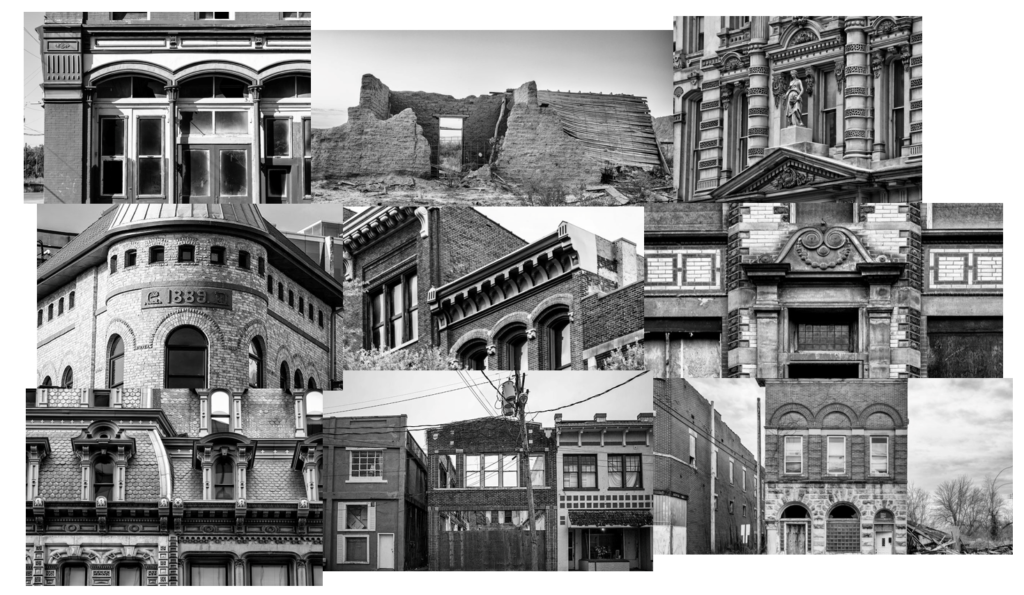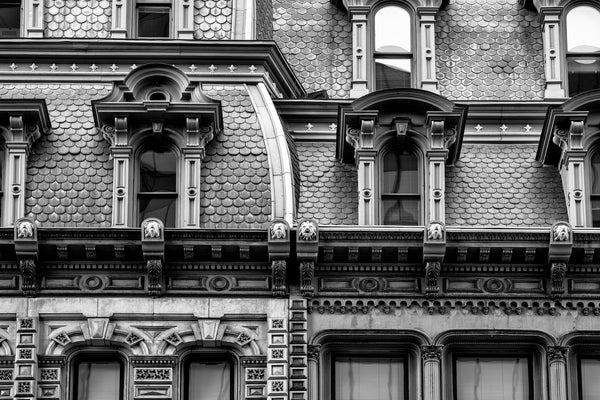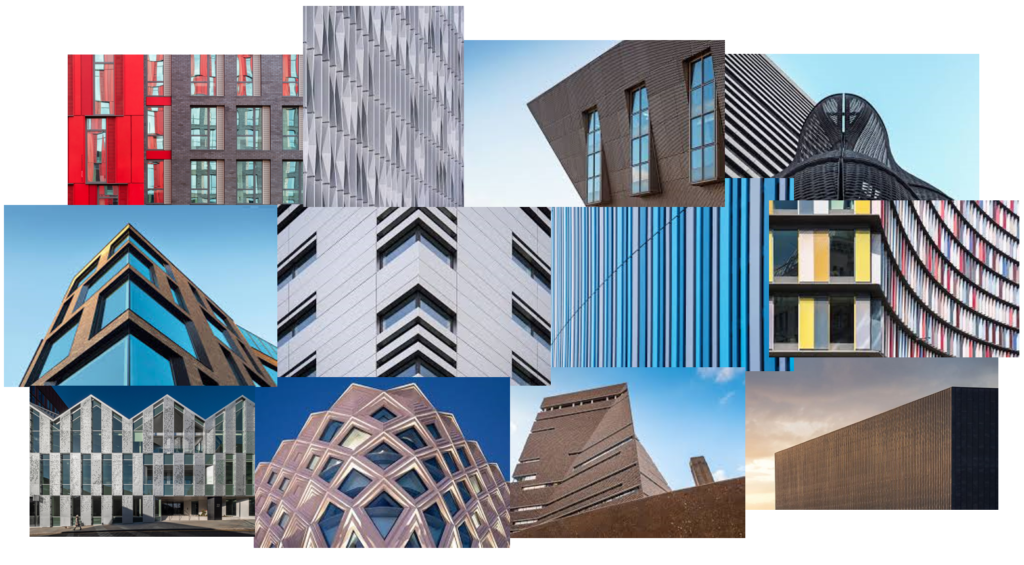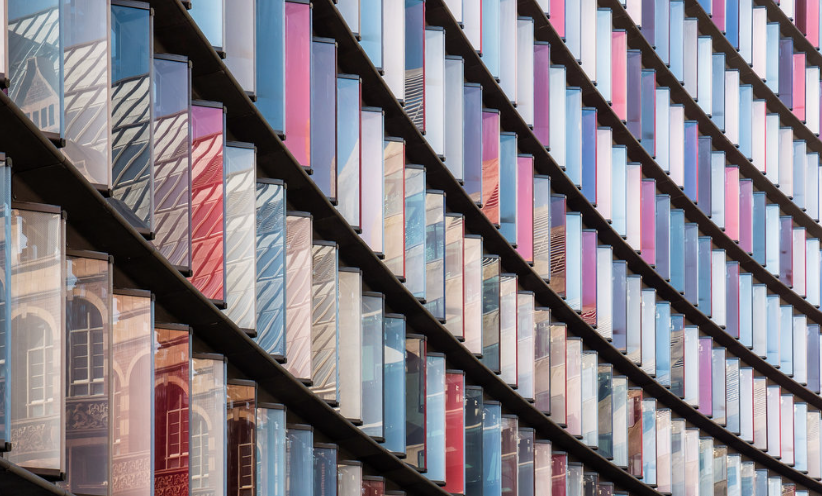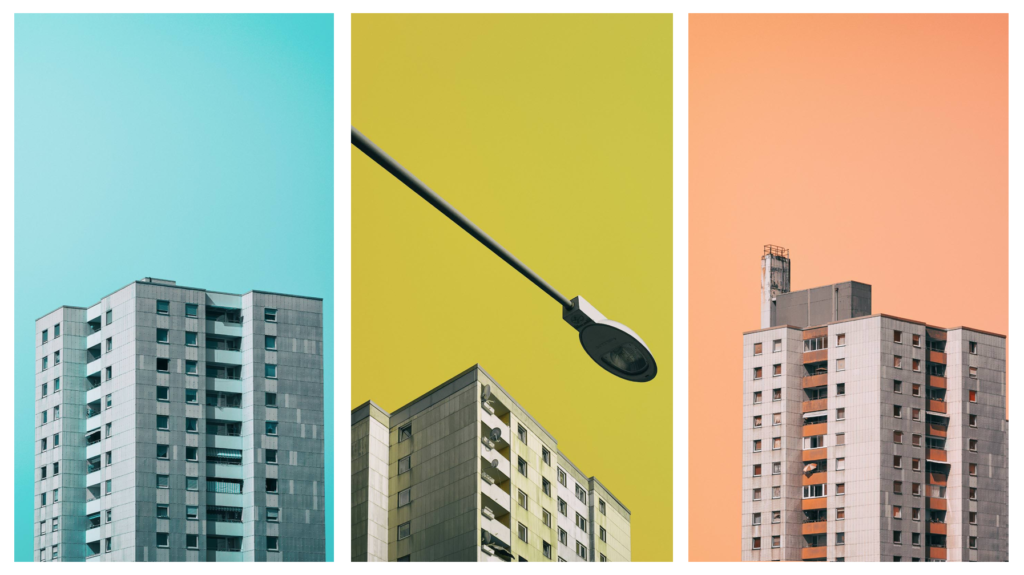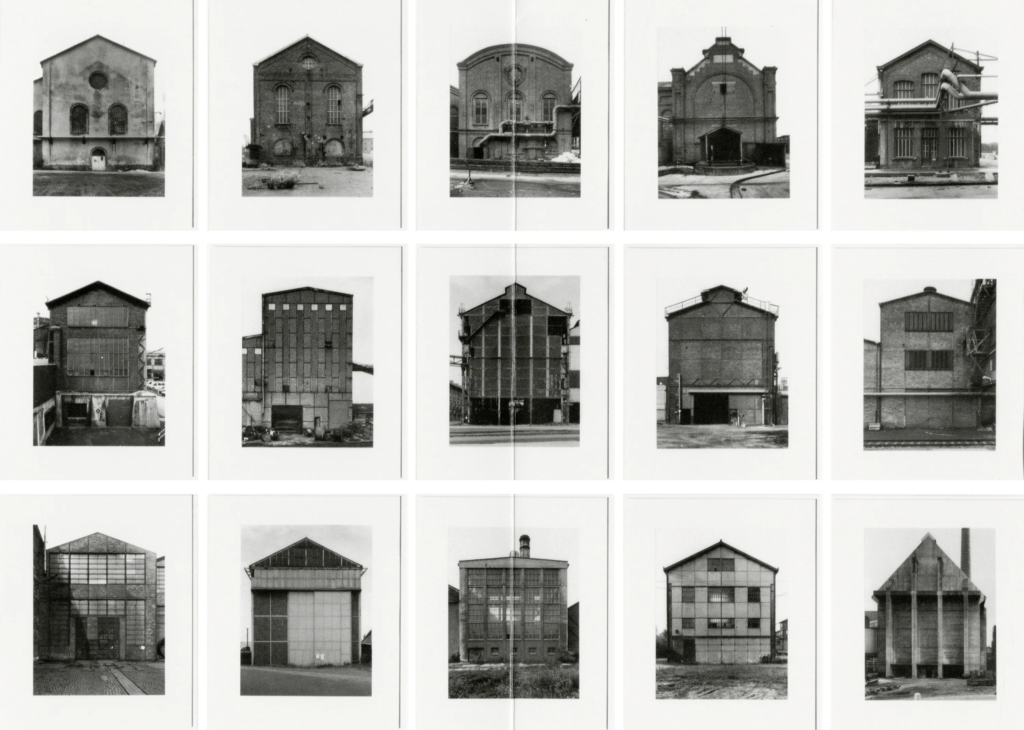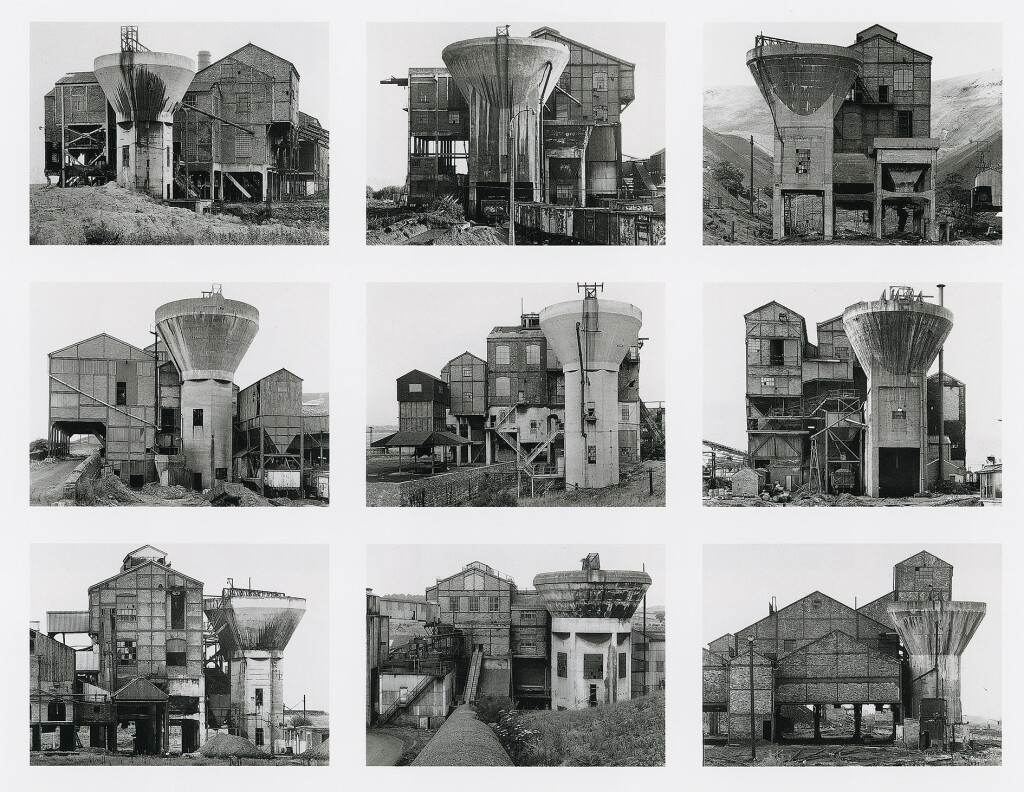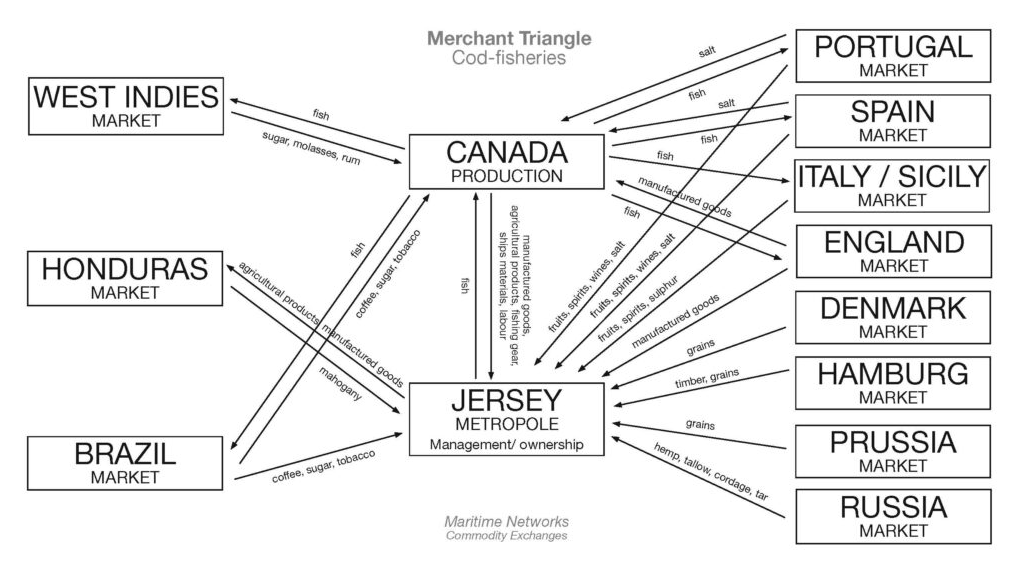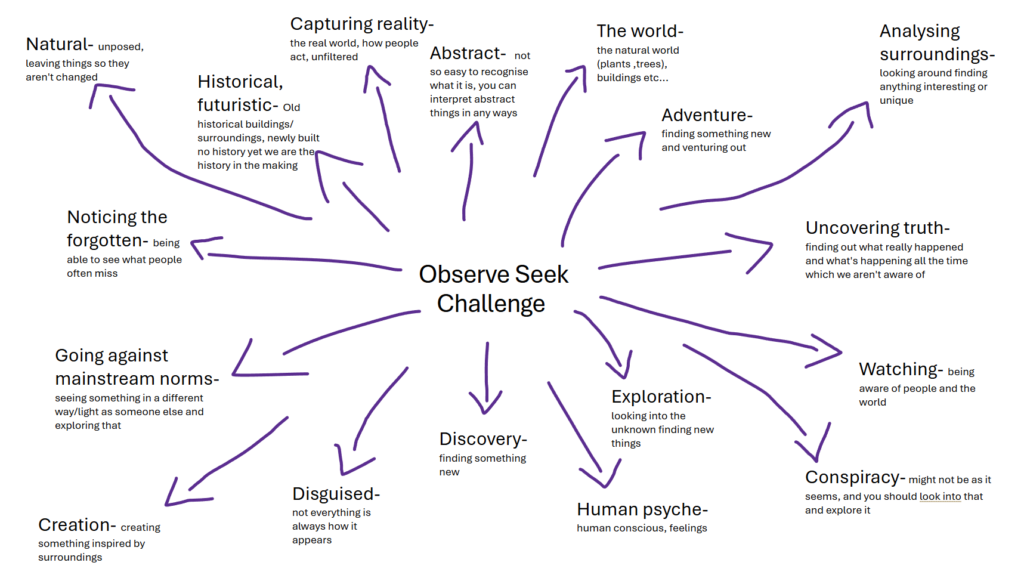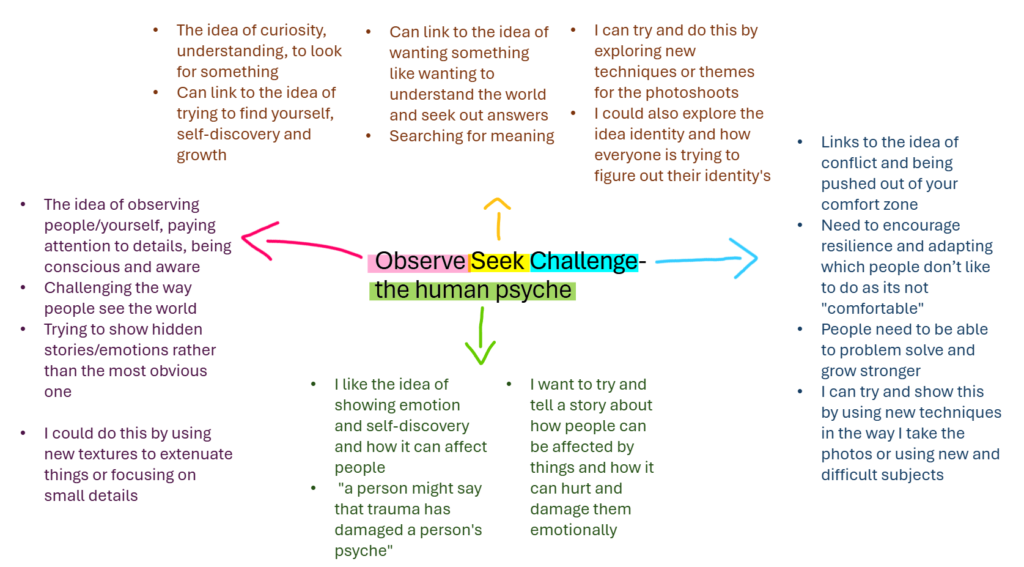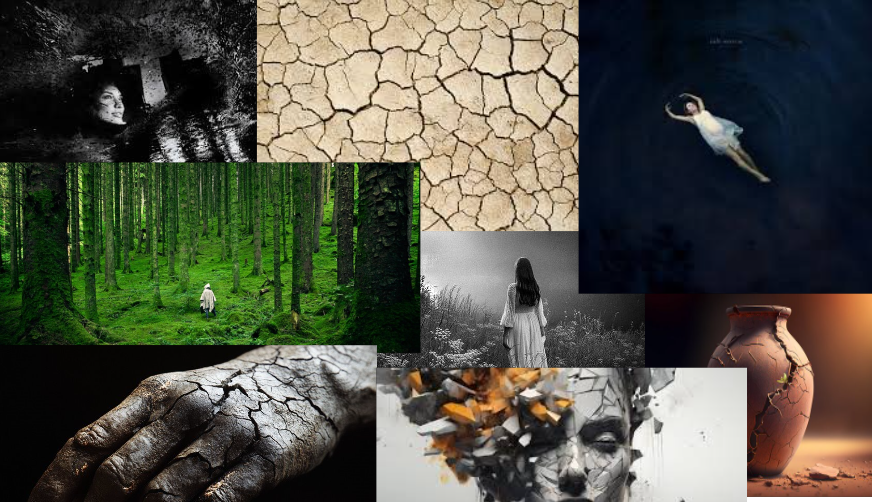Statement of Intent
For my project, I would like to explore personal identity and the visual elements of abstraction and imperfection within a photograph which is taken spontaneously; as a response to things around me, a collection of portraits, landscapes, and objects as a way of documentary and observational ‘snapshot aesthetic’ photography. I would like to present my images taken of my friends, myself, my family, and various locations and objects with a photobook. In this book, I could possibly present these photos alongside accompanying text or a notebook page, and manipulation or change of my photographs, either by applying paint, ripping/tearing/burning them, cutting a subject or something out, or re-joining the same or a different photograph with thread. Another way I could possibly change the photographs is merging or overlaying these photos digitally to create a blurry effect in certain areas.
To develop my project, I have looked closely at the photographs and books of Nan Goldin, Ed van der Elsken, Cindy Sherman, Francesca Woodman, and Josh Kern, to inspire the way I take and present my own photos. Goldin’s intention especially behind taking her photographs resonates with how I feel about capturing photographs for this project, where for a part of it, not entirely planning who I will photograph and where – instead the people I am with at a certain time and observe where I see a photograph opportunity, or not, and making it appear somewhat randomised, focusing on the disjunctions and juxtapositions of the individual photographs.
These types of candid, documentary photographs can only be genuinely captured through carrying a camera around with me in order to capture unexpected moments, in a variety of different locations, both inside and outside. Because of this, some photographs will be captured on my small digital camera, for times I don’t have my digital film camera. Although, I will have some photographs which are staged, I would like them to still have an almost spontaneous appearance, and these ‘photoshoots’ of a subject in an environment may not initially be planned beforehand. This take of impetuosity on these photographs links back to the ‘abstract’ part of my mind map – for example, a use of abstraction of portraits with parts of the body blurred, obstruction between the subject and the camera, imperfections in the photo, camera movement/slower shutter speed, or flash photography.
I may also sequence frames from videos taken on my small digital camera and present them as a small component of my book, an idea I have is through a film strip layout. By aligning the photographs in this way, I’ll be displaying both the clear and blurry frames side by side as a juxtaposition, along with presenting an object (e.g. film strip, receipts, or any ‘rubbish’ I have collected from when I am out taking these photos) through possibly photocopying them or editing them in digitally to the layout. The layout of my other photographs will be presented differently from image to image, as some might be a double page spread, or one photo on its own, two beside each other, or in a grid sequence showing ‘unused’ photographs (crossed out with pen, depicted as a physical contact sheet), etc. This decision to include multi-media and text into the project I believe will make it more personal to me, as I can directly express more through how my images are presented.

